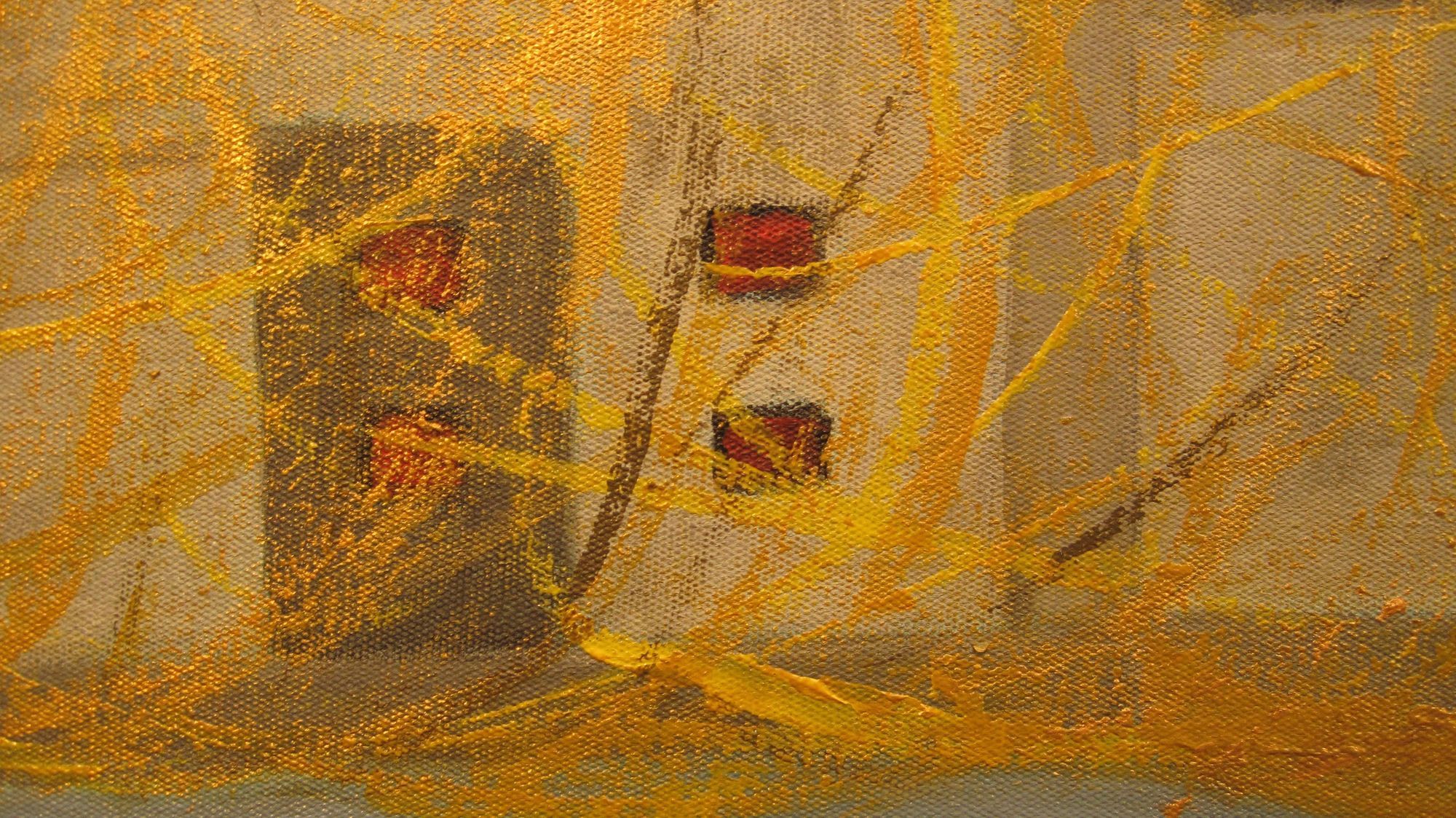A little bit about Judith Loomis:
Art has been on my mind, though not in my fingertips, most of my life. I grew up in Northern New York and chose to attend SUNY at Albany for its language department, but I took as many art electives there as possible. A degree in French in 1964 bought me one year of teaching, during which I met my husband. From then until we moved here, I was making homes in different parts of the country for him and our three sons, while he managed construction of nuclear power plants.
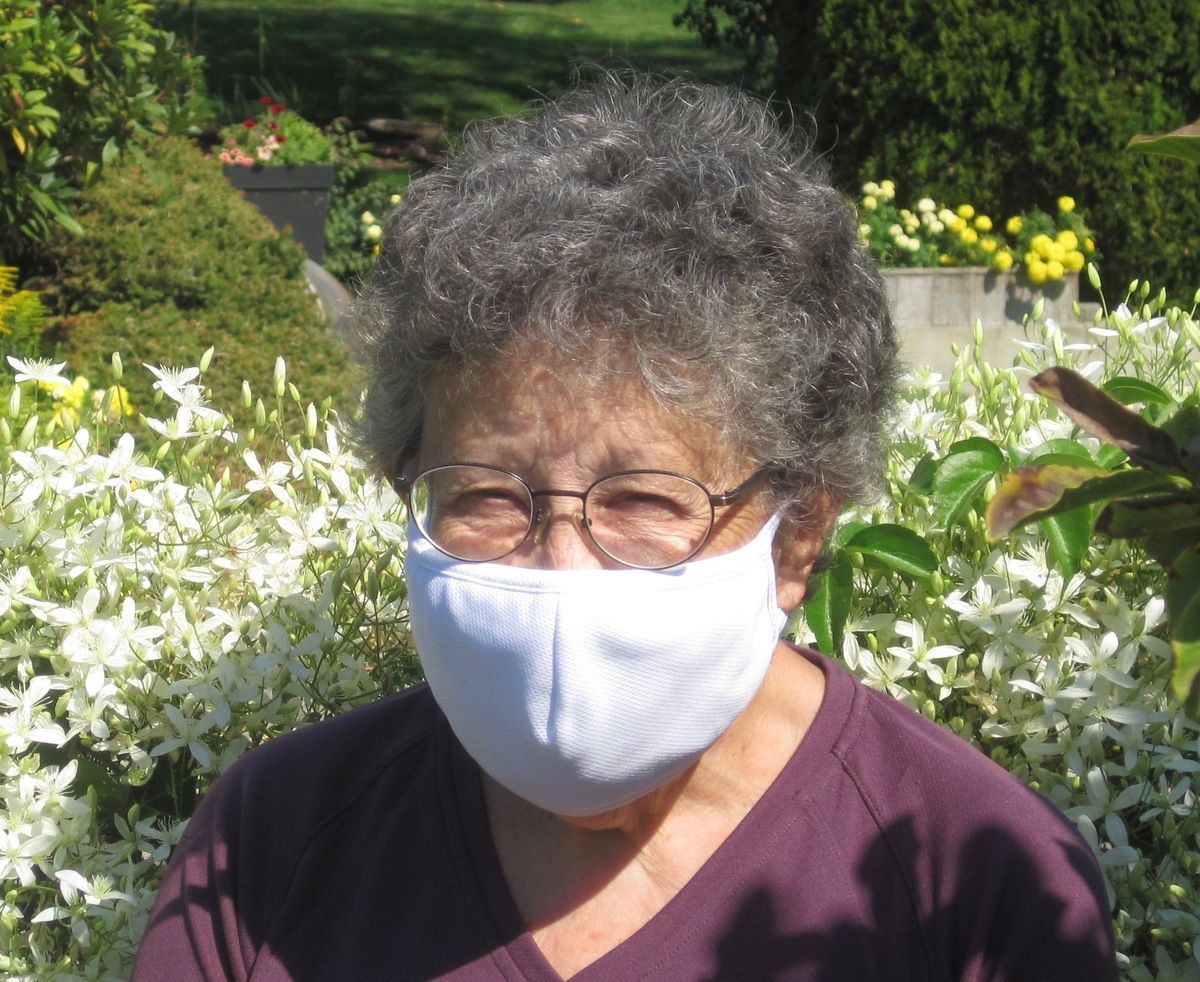
In Louisiana and Illinois, I worked university art classes into my schedule and earned a BA in art at ISU in Bloomington in 1986. We moved to Richland in 1987, and I was immediately drawn to the history of the area. I hoped to address Hanford issues in my art attempts, but it's been slow going in all the years since. Priorities usually are taking care of house and yard and volunteering for Allied Arts Association. I still can hardly call myself an ‘emerging’ artist, yet I have exhibited work in several juried shows in Eastern Washington and have won a couple of awards over the years. The issue of waste, both nuclear and household, is an obsession, and I find the history of this place interesting enough to want to capture it all.
Tell us a little about what you are currently working on.
(Pulling weeds out of my ridiculous flower and native plant beds) ... and trying to make time to rework several problematic artworks. Two are made of wasps' nests, two are made of Megamillions tickets, one is a little piece I did for the DrewBoy pandemic-themed virtual show last year (for which I was embarrassed to receive an award from Davin and his wife), and still another is a photo montage of the people passing by my windows.
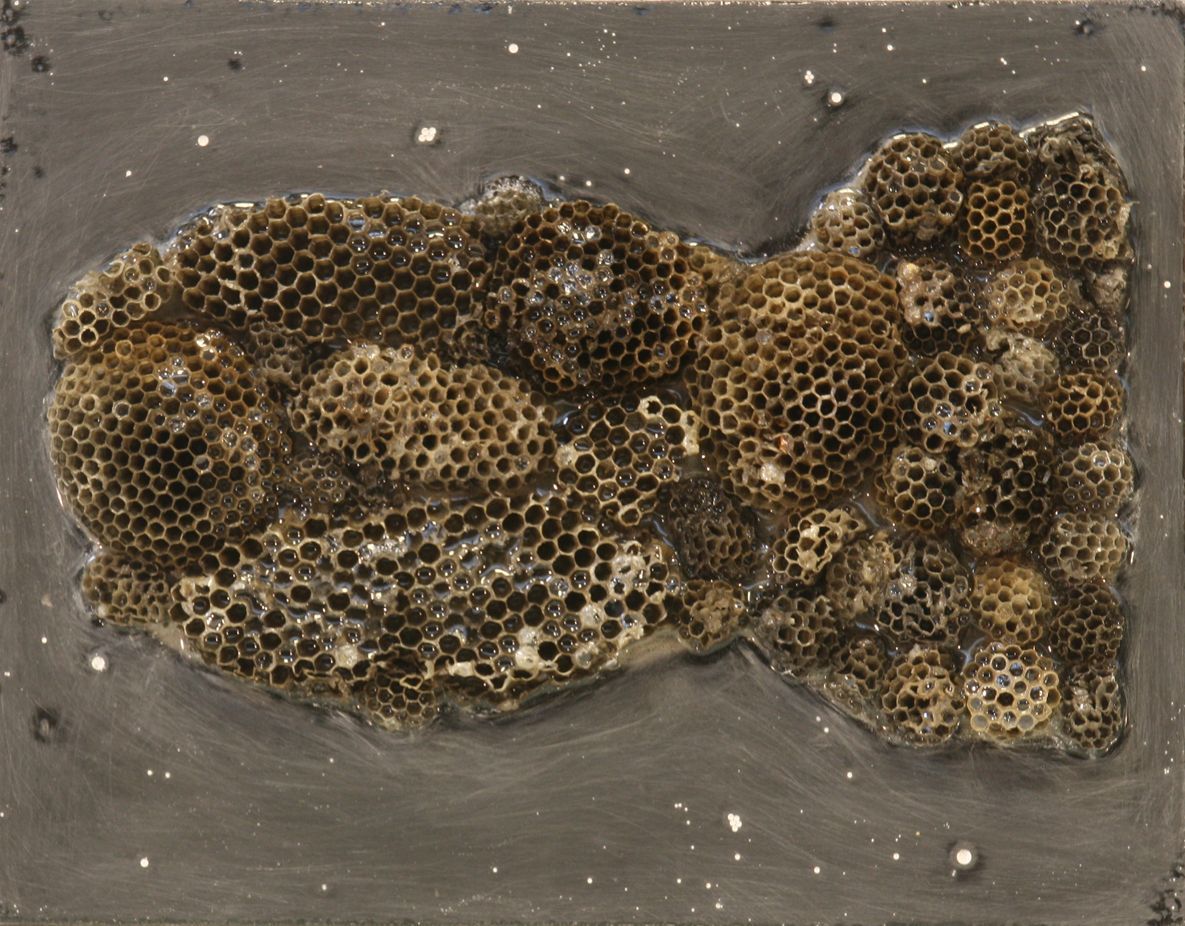
Can you tell us about your technique?
Occasionally I draw or paint, but more often seem to be gluing things together. For pictures using non-recyclable objects like bottle caps and other plastic waste, I use Yes Paste, a printmakers' glue, to stick them on a surface instantly. After I'm finished with the design, usually something to do with Hanford and its waste or an overall design showing the plastic waste for itself, I usually coat the picture with resin.
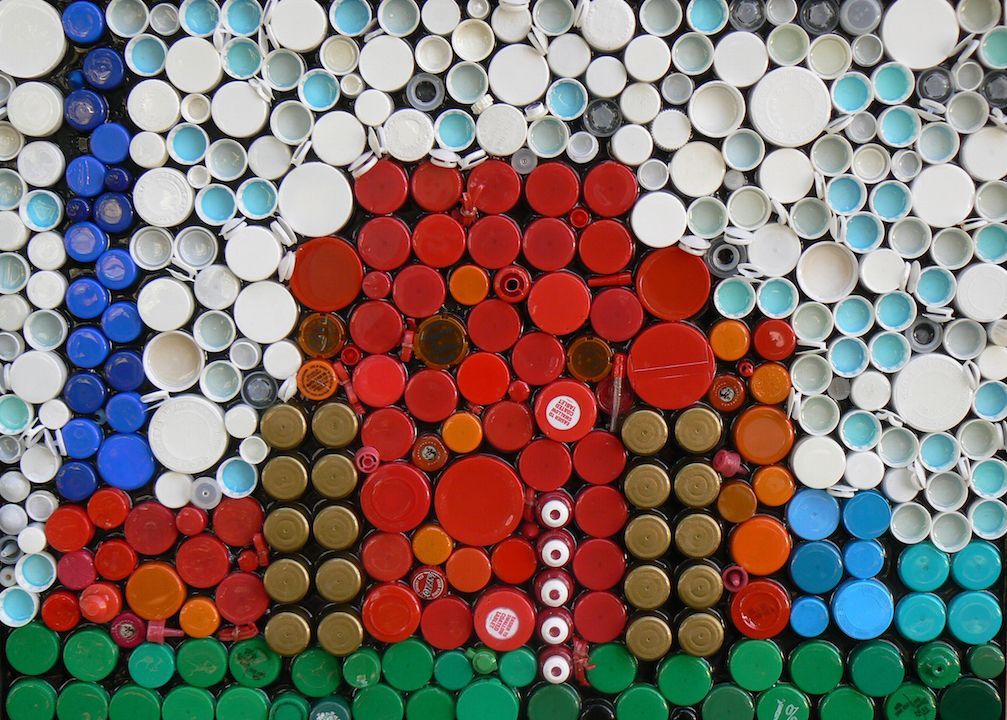
What inspires you?
‘Inspire’ is a funny word for me, since I have a very negative attitude. Some people call me Negative Nelly. All the waste we are leaving in the world, as well as the unusual history of our area, both generate most of my ideas for artwork.
How have personal challenges impacted your work?
It's hard to make a priority out of working in the cluttered bedroom that serves as a studio when there are so many other things I have to do first. I have often said that my tombstone should say ‘But First’.
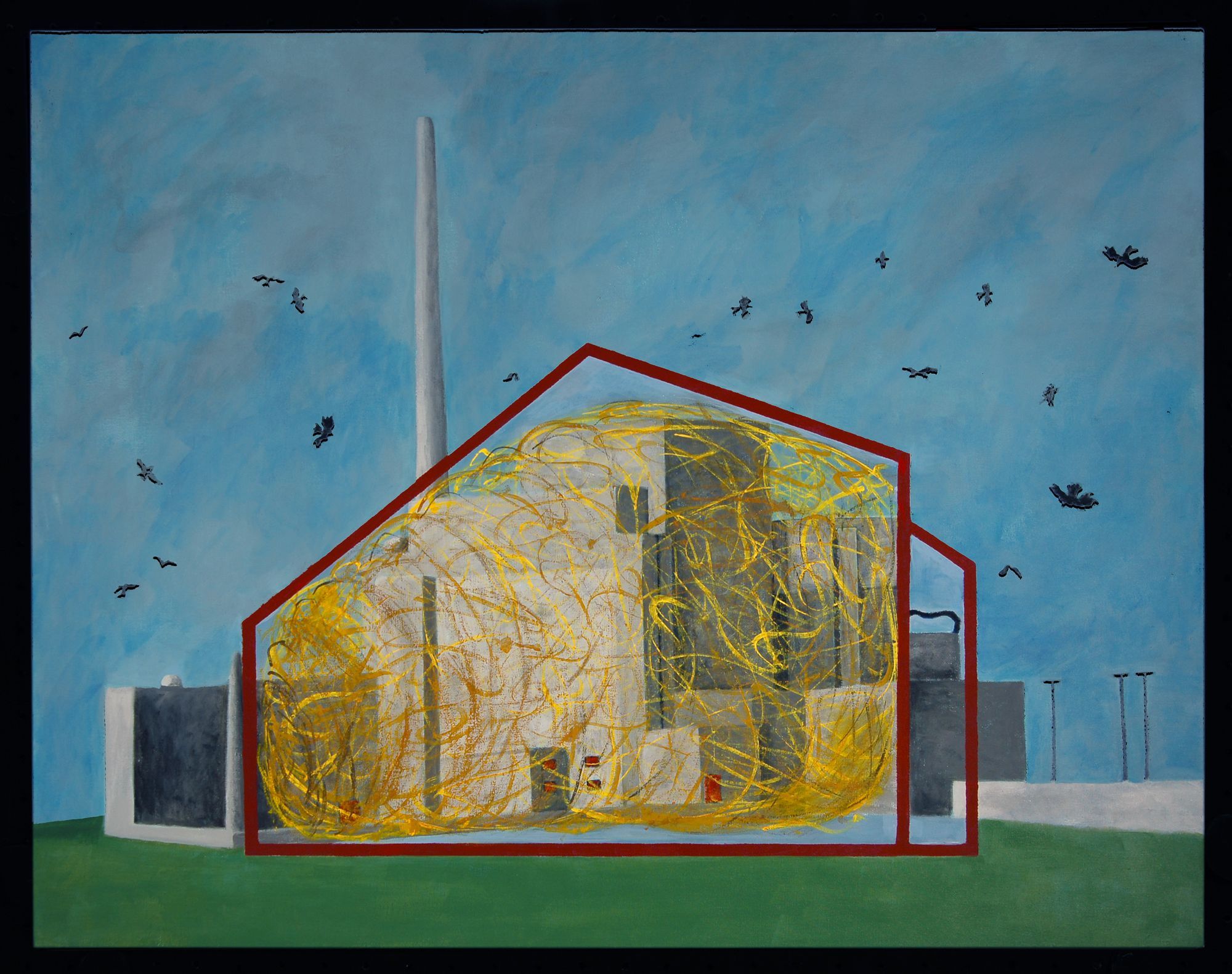
Can you share your artistic philosophy?
I don't want to make pretty pictures. Plenty of people do that already. For paintings OF things, I aspire to make them more about the color than the objects themselves. I haven't done much of that, but it's in my head. Otherwise, I guess I want to make a point, and preach without being didactic. Is that possible? Maybe I would like the viewer to be amused and then figure out what I was trying to say. Or not.
I love how you describe your process as most often “gluing things together.” Do you usually have an idea in mind and seek items to fit that narrative, or are you inspired to create based on objects or items you find?
Usually, the ideas come from plastic waste that accumulates because I hate throwing so much that can’t be recycled in the trash, especially similar items. Later, I ask what I can do with those things. My husband recently threw away a stash of dead pens, just after I had come up with an idea for what to do with them. Now I have a reason to save more of those.
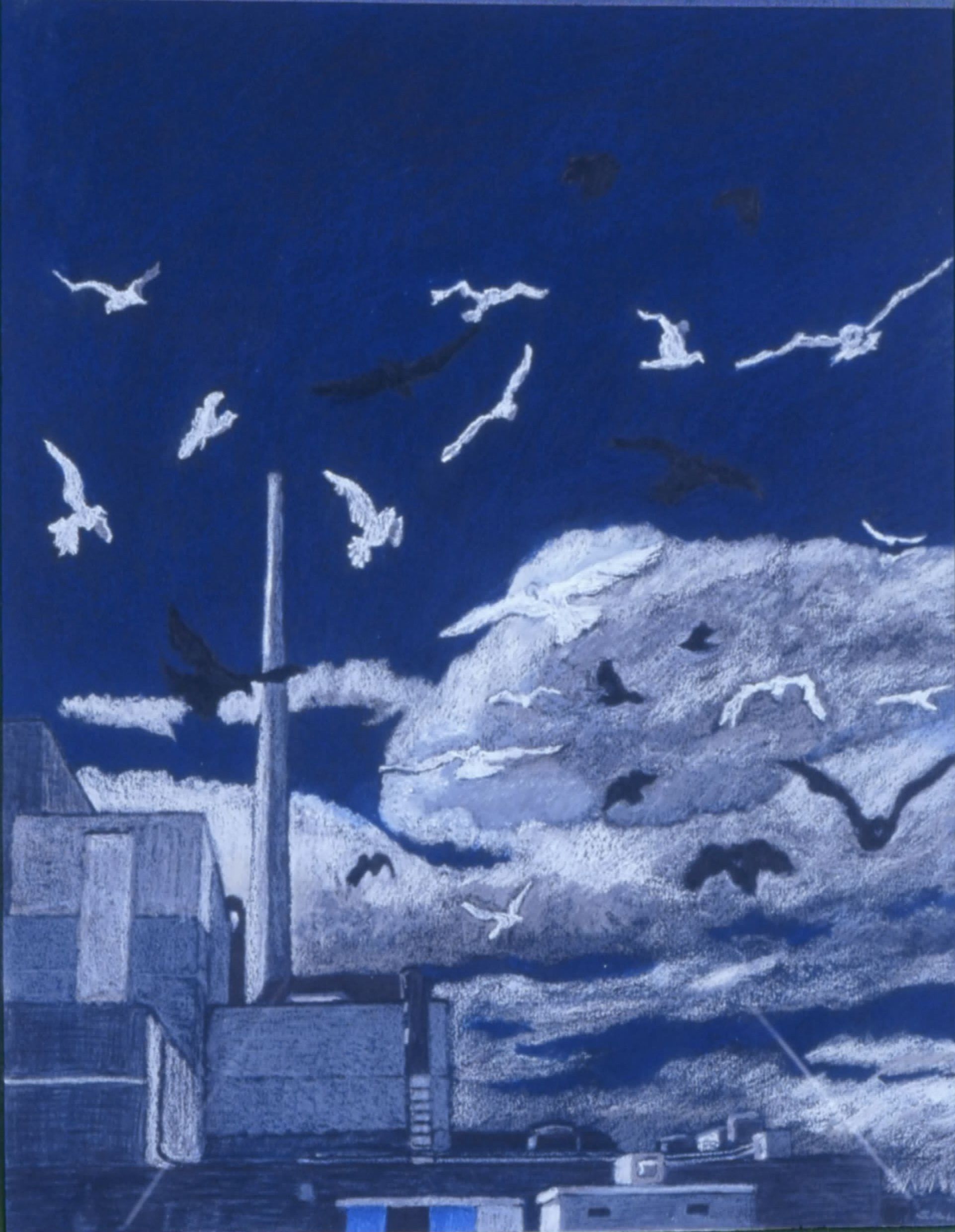
Tell us more about the obsession with household and nuclear waste. Where did it originate and how does it inform your practice?
My obsession might have started years ago when I collected cans for an ongoing church fundraiser. They turned them in for money someplace. Maybe I extrapolated that to saving everything that might have value? Now that we have recycling, if I know I can dispose of something that way, I’m glad to do it. If not, I might have to save it to make art with it.
Sometimes, though, the idea of waste comes before I decide to paint it or use trash to picture it. That was the case for nuclear waste as a subject; that obsession came about after we moved here. My husband supported us by building nuclear plants and came to help clean up the mess here. (I think my resume touched on that.) I want to make viewers notice it’s here and think about it… but I do fear being didactic. No problem, I guess, because people don’t get the idea anyway!
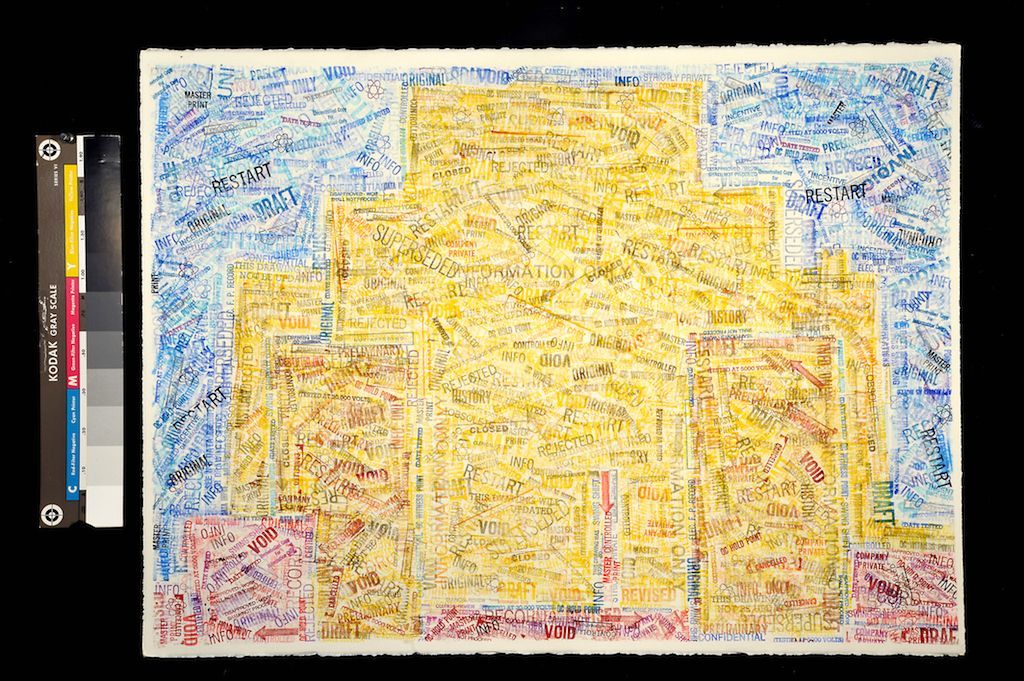

What would you tell an artist who is just starting out?
I think I would advise someone starting out to do what I hope to do myself someday: reserve a certain day each week, if not a few hours a day, to concentrate on art. My problem with that is that once I start working on an art project, I know I won’t want to stop. So I don’t start. If there’s a show I want to enter, especially when it isn’t in weed growing season, I try hard to make time to work on art projects.
Who are your favorite artists?
My favorite artists are Matisse, Kandinsky, and Diebenkorn. There are others I can’t name right this minute.
Did you always know art would be an integral part of your life?
I loved art in high school but had to choose between a state teachers’ college that was known for art and one that was known for languages. I went to the language one, perhaps for the wrong reasons, but I snuck in as many art electives as possible. I remember an advisor telling me I really should take European history instead of an art history course!
How can our community better support artists?
Now, how can the community better support artists? For one thing, don’t decorate your house with Thomas Kincaid prints! Instead of filling walls with pictures from decorators’ shops, go to galleries that show local artists’ work. Encourage school boards to keep offering art classes in schools, and do what you can to point other people to galleries. And of course, I have to put in a shameless plug for Allied Arts: check out Gallery at the Park for gifts as well as art and art classes!
Main image: Cocooning Radioactivity by Judith Loomis.
Ashleigh Rogers is the Creative Director at DrewBoy Creative. She is an artist and art instructor living in Richland, Washington with her husband and three children. Find her on Facebook: Ashleigh Rogers Art or Instagram: ashleigh.a.rogers

